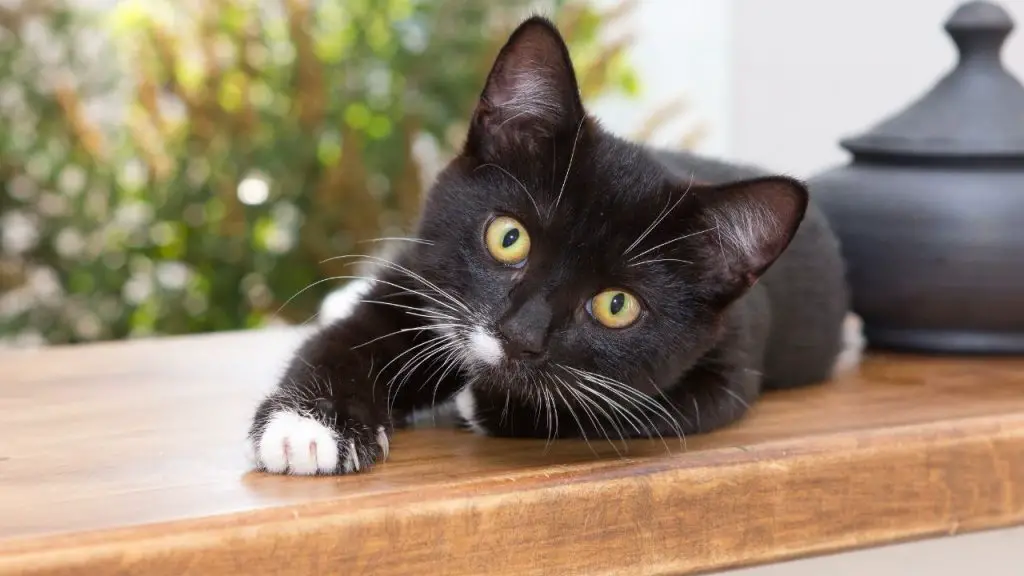Cats can be hard to read. Pain can be hard to detect. To keep your cat healthy, it’s important to know the signs of pain. Here are 7 that might indicate your cat is feeling pain:
- Loss of Appetite
- Change in Activity Level
- Expression Changes
- Agitation or Irritability
- Posture Changes
- Vocalization Changes
- Grooming Habits Change
What are the seven common signs that indicate that your cat is in pain, and how can you tell if your feline companion is experiencing discomfort?
Cats are great at hiding discomfort, which can make it tough to tell if they’re in pain. But there are clues. Look out for:
- Loss of Appetite: No appetite for several days could mean a bigger issue.
- Change in Activity Level: A sudden change in their activity could mean something’s wrong.
- Expression Changes: Watch for facial tension, panting, or squinting.
- Agitation or Irritability: They may be more aggressive due to pain.
- Posture Changes: Hunched-over and slow movement could be severe pain.
- Vocalization Changes: Hissing, yowling, or meowing longer than 4 seconds.
- Grooming Habits Change: Excessive grooming could indicate skin conditions or broken bones.
They may also have changes in their temperament and be more aggressive or clingy. Pay attention to their behavior so you can spot any changes quickly. See a vet if your cat is showing one of these signs – it’s important to get them help.
How to Recognize Pain in Your Cat?
Cats are great at keeping pain hidden. As a pet owner, it’s vital to be aware of signs that your cat is in pain. Changes in behavior and activity level can be clues. Plus, some physical symptoms can also alert you. Recognizing these signs of discomfort helps you provide relief and care for your cat.
Signs you may notice when your cat is in pain:
- Change in Behavior: E.g. a sick or hurt cat may become lethargic, less social, or hide more often.
- Hiding: A normally outgoing kitty suddenly spending more time alone, could mean they’re hurting.
- Decreased Appetite: Watch for a decrease in food and water intake.
- Changes In Grooming Habits: Disheveled or unkempt fur could be a sign they’re not feeling well.
- Agitation or Restlessness: Cats that feel unwell may meow more and act agitated.
- Decrease In Activity Level: Look out for less jumping and movement than normal.
- Limping or Difficulty Walking/Jumping: Any changes warrant an immediate trip to the vet.
If you spot any of these signs, contact your vet right away. Your vet may recommend exams, like x-rays or blood tests, depending on the severity. Catching health issues early helps relieve your cat’s suffering and improve their quality of life.
What Are the Causes of Pain in Cats?
Pain can be caused by various factors – medical condition, injury, or trauma. Cats typically suffer from:
- Inflammatory issues like arthritis, pancreatitis, or IBD.
- Injuries from physical trauma – abscesses, bites, lacerations, burns, or broken bones.
- Post-operative pain from surgery or anesthetic complications.
- Cancer-related pain from tumors pressing on nerves or bones.
- Organ failure, infection, or other diseases.
- External annoyances such as bug bites, stings, or flea dermatitis.
- Senior age-related issues – arthritis and joint degeneration.
How to Treat Pain in Cats?
Cats are known to hide signs of pain, making it hard to tell if they’re in distress. But there are some signs that can help you identify if your cat is suffering. If they display any of these behaviors, take them to the vet right away.
Physical Signs: Watch out for changes in activity and normal behaviors such as eating and drinking. Look for limping, or less obvious signs like posture changes or “hunching” up when approached.
Temperament Changes: Cats usually stay aloof and independent. If they seem extra irritable, cranky, or uninterested in people and other cats, something may be wrong. Also, watch out for signs of depression like sleeping more and lack of energy/motivation when playing.
Vocalization Changes: Cats normally purr when content. Other forms of vocalization such as excessive meowing, yowling, or hissing could mean they’re in pain – especially if it’s louder and angrier than usual.
Grooming Habits: Painful cats may groom themselves less due to reduced mobility. Look for fur mats or bald patches which show grooming has been neglected. Also, pay attention to excessive licking at one spot which could mean discomfort.
Hide & Seek Behavior: When cats are feeling ill, they may hide more often. If you notice your cat secluding themselves more, it could mean they’re trying to heal.
Organ System Affectations: Vomiting, diarrhea, urination frequency changes, and poor bowel movements could be warning signs. Don’t overlook them.
How to Prevent Pain in Cats?
Cats can be in pain without you knowing. To prevent your furry friend from suffering, here are seven tips:
- Give them a comfortable, stress-free, and clean living space. This will reduce signs of stress like aggression or peeing outside the litter box.
- Feed them a balanced diet. Malnutrition weakens the immune system, leading to GI problems and pain.
- Get regular check-ups. A qualified vet can spot any issues before they become severe.
- Exercise them regularly. This keeps their muscles and joints healthy and keeps them fit even when they’re old.
- Keep up with vaccines. These protect cats from diseases like rabies, distemper, and feline leukemia which can cause pain.
- Monitor their weight. Being overweight increases the risk of joint problems, like arthritis, which can cause pain.
- Provide scratching posts and furniture for grooming. This gives them exercise and relieves boredom, reducing stress-related behaviors that can cause discomfort or distress.
When to See a Vet?
Cats can’t talk, so it’s hard to know if they’re in pain. But there are clues. If you see any of these signs, take your cat to a vet right away. Unchecked pain can hurt their physical and mental health.
- Limping or not moving
- Meowing more than usual
- Unexpected changes in appetite
- Aggression or not wanting to interact
- Face looks uncomfortable
- Heavy breathing, panting
- Grooming spots that hurt
What are some of the best ways to keep your cat’s pain under control, from medication and surgery to alternative therapies and lifestyle changes?
When managing a cat’s pain, there are several options. Nonsteroidal Anti-Inflammatory Drugs (NSAIDs) are available for short-term pain relief, but the FDA doesn’t approve of their long-term use. Surgery may be needed, but complementary therapies like laser therapy, chiropractics, physical therapy, massage, and acupuncture are useful in treating pain. In fact, many cats experience successful pain relief through complementary medicine. A combination of therapies may be necessary depending on pain severity. Lifestyle changes like special diets and exercise can improve a cat’s overall health and help manage pain in the long term. It’s crucial to work closely with a veterinarian to determine the best treatment course for a cat’s individual needs.
How do cats communicate their pain, and what can you do to support your pet’s well-being and alleviate their discomfort?
Cats can be stoic creatures, concealing their pain until it becomes severe. However, some signs indicate that a cat communicates pain, including reduced activity, hiding, appetite loss, and frequent vocalization or meowing. As a pet owner, being aware of these signs is crucial, and taking action to alleviate your cat’s pain is necessary, such as providing pain medication like NSAIDs or opioids. Alternative treatments, including massage therapy, joint manipulation, and glucosamine supplements, can also aid in reducing discomfort. For recent injuries, cold therapy can be helpful, and turmeric may reduce inflammation naturally. Administering medication to a cat can be stressful, so always consult your veterinarian for advice. Ultimately, paying close attention to your cat’s behavior and taking proactive measures to support their well-being can ensure they lead a happy, pain-free life.
Conclusion
It’s essential to remember that cats are great at concealing pain; it’s natural for them. If you observe any of the above signs or any great shifts in their routine, take them to the vet ASAP. An early diagnosis and treatment are fundamental in managing feline pain and suffering.
When talking to the vet, they might suggest dietary changes, supplements, or drugs to provide further assistance to your cat. If your cat is struggling with a continuous illness like a kidney infection, arthritis, or diabetes, they may need frequent check-ups and treatments. It’s also important to keep up to date on vaccinations to help stop your cat from feeling pain.
The most important thing for you is to keep an eye on their behavior and watch out for signs of misery or physical uneasiness so you can give them relief quickly. Taking care of a cat with pain needs patience and understanding – but with the right care, your furry friend will be feeling better soon!







